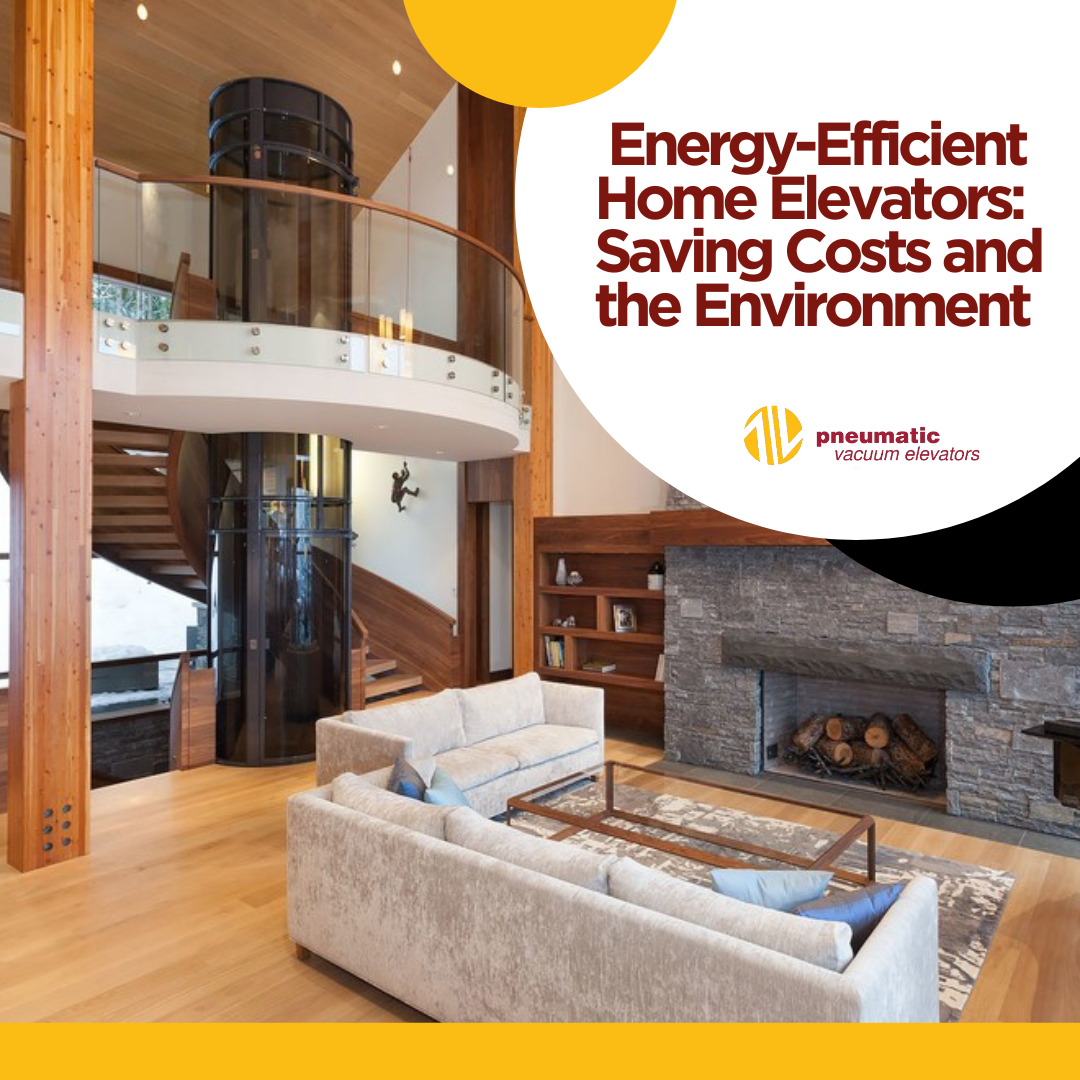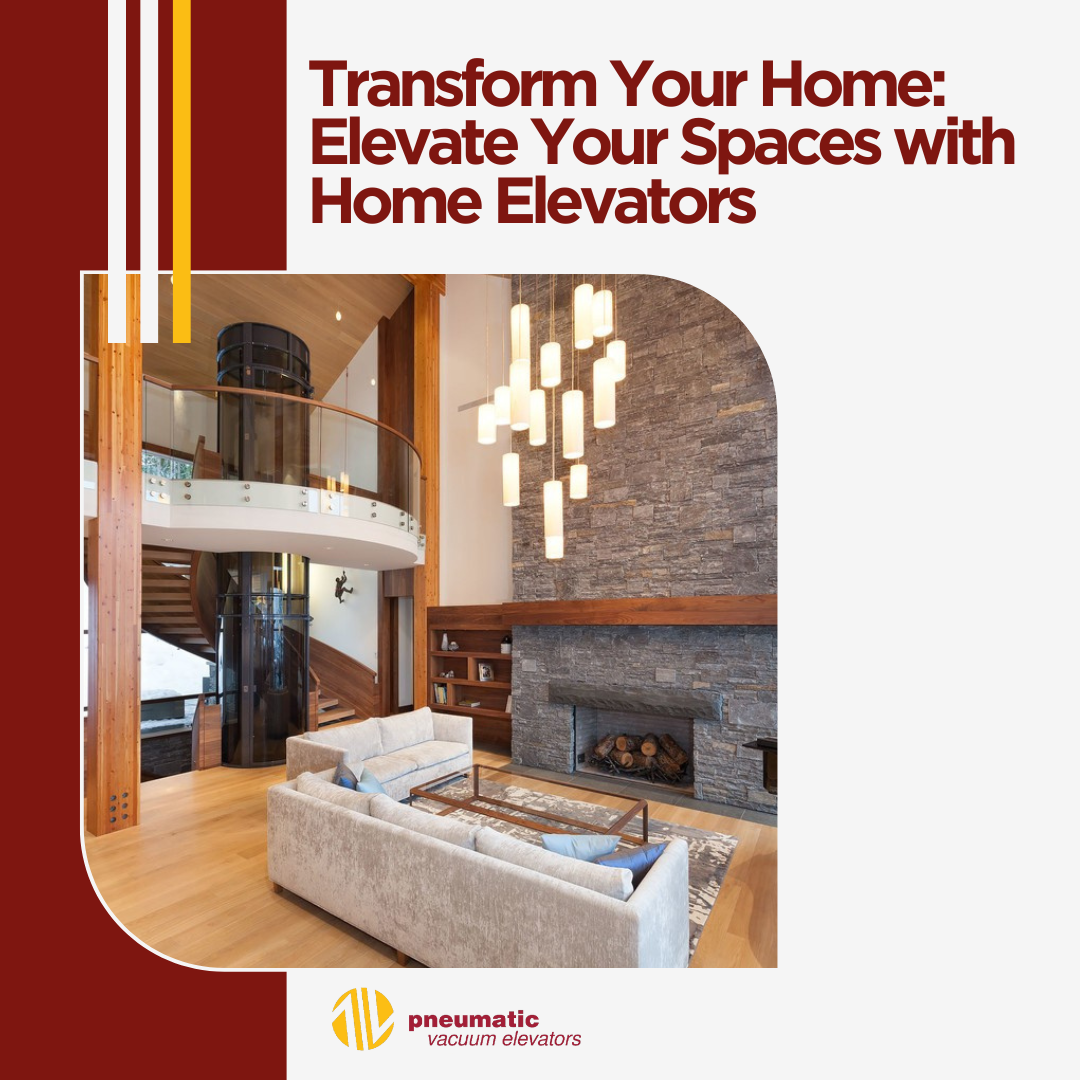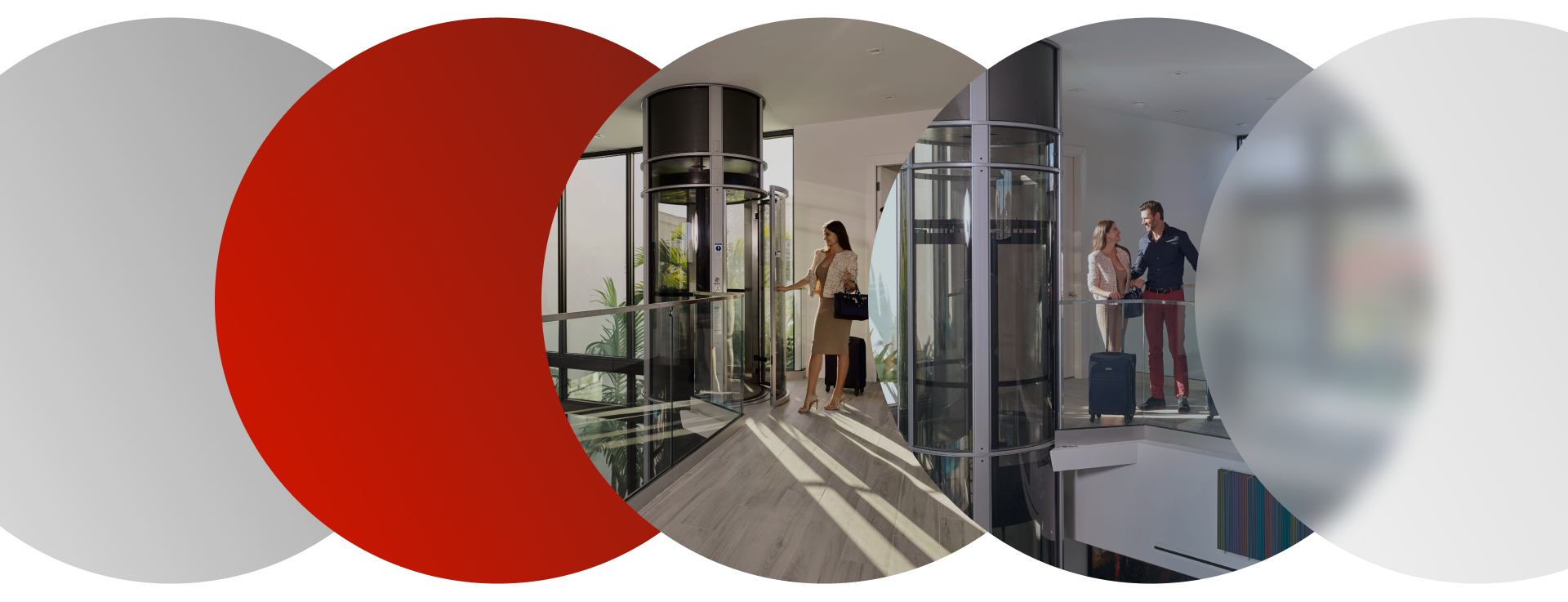Traditional traction elevators, while undeniably a cornerstone of vertical transportation, often present significant challenges within the residential domain. Their space requirements, high installation costs, and ongoing energy consumption necessitate alternative solutions for multi-story homes. Enter residential pneumatic vacuum elevators (RPVE), a revolutionary technology that utilizes pressurized air to propel a capsule within a transparent tube. This document delves into the technical aspects of RPVE, exploring their operation, advantages, limitations, and future advancements.
The Operational Core of RPVE

The core principle of RPVE hinges on the manipulation of pressure differentials within a sealed, transparent tube fabricated from robust yet lightweight materials like polycarbonate. This tube serves as the elevator shaft, housing a specially designed capsule that accommodates passengers.
Key Components and Functionality:
- Pressure Generation Unit (PGU): A high-performance vacuum pump, typically positioned at the apex of the tube, establishes a low-pressure environment within the upper section. This creates a crucial pressure differential between the top and bottom segments of the tube.
- Capsule Movement: The pressure differential exerts a buoyant force on the capsule. When a passenger enters, the weight distribution within the capsule shifts. Sophisticated control systems then strategically adjust the pressure in the lower section, enabling the capsule to ascend smoothly.
- Descent Control: To facilitate descent, the control system meticulously releases pressurized air into the lower section. This gradual increase in pressure brings the capsule down in a controlled manner, ensuring a safe and comfortable experience.
- Safety Mechanisms: Multiple safety features are paramount in RPVE operation. These include emergency braking systems triggered by excessive pressure deviations, pressure sensors for real-time monitoring, and automatic door locks to prevent accidental activation.
Advantages of Residential Pneumatic Vacuum Elevators
Compared to traditional traction elevators, RPVE offer several compelling technical advantages:
- Compact Footprint: A defining benefit lies in their space efficiency. Unlike traditional elevators that necessitate a dedicated shaft, machine room, and pit, RPVE utilize existing architectural elements. The self-supporting transparent tube can be strategically positioned along an existing wall, minimizing disruption to the existing layout.
- Expeditious Installation: The modular design of RPVE, coupled with the elimination of extensive construction requirements, facilitates a significantly faster installation process compared to traditional elevators. This translates to less downtime during home renovations and quicker enjoyment of the added convenience.
- Energy Optimization: The air-powered operation of RPVE makes them highly energy-efficient. They consume considerably less energy compared to the electric motors used in traditional elevators, resulting in lower operating costs and a reduced environmental footprint.
- Aesthetics with Functionality: The transparent tube adds a unique visual element to the home, fostering a sense of openness and architectural intrigue. Additionally, the capsule design can be customized with various finishes and integrated lighting options to seamlessly blend with the overall interior design.
- Accessibility Considerations: Specific RPVE models can be designed to accommodate wheelchairs, making them a valuable accessibility feature for multi-story residences.
Considerations for RPVE Implementation: Balancing Advantages with Limitations
While undeniably innovative, RPVE do come with certain technical considerations that require careful evaluation:
- Capacity and Weight Constraints: These elevators are typically designed for single passengers or a maximum of two, depending on the specific model. Their weight capacity is also lower compared to traditional elevators. This necessitates careful planning for user needs and potential cargo transportation requirements.
- Travel Height Limitations: Due to the pressure differential needed for operation, RPVE currently have limitations in their maximum travel height. They are best suited for multi-story homes with a moderate vertical distance between floors.
- Noise Considerations: The operation of the vacuum pump can generate some noise, although advancements in sound attenuation technologies are leading to quieter systems. Careful selection of the RPVE model and strategic placement within the residence can further mitigate noise concerns.
- Cost Analysis: While generally less expensive than traditional elevators, the upfront cost of an RPVE can still be significant. A thorough cost-benefit analysis considering installation, maintenance, and long-term energy savings is crucial for informed decision-making.
The Evolving Landscape: Future Developments in RPVE Technology
The field of RPVE is constantly evolving, with advancements aiming to address current limitations and expand their application:
- Increased Capacity and Travel Height: Manufacturers are actively researching methods to increase the passenger capacity and travel height of RPVE. This could potentially make them a more viable option for larger homes with greater vertical distances.
- Advanced Control Systems: Future iterations may integrate even more sophisticated control systems, allowing for seamless integration with smart home technologies and further enhancing user experience. These systems could potentially offer features like automatic floor calling and personalized lighting within the capsule.
- Noise Reduction Technologies: Ongoing research focuses on minimizing noise generation from the vacuum pumps. This could involve advancements in pump design, soundproofing materials, and active noise cancellation technologies.
Structural Design and Material Selection:
- Tube Material Selection: Polycarbonate is the most common material used for the transparent tube due to its exceptional strength-to-weight ratio, clarity, and impact resistance. However, advancements in material science may explore options like laminated glass or advanced polymers offering even greater strength and durability.
- Capsule Design and Construction: The capsule design needs to strike a balance between passenger comfort, weight efficiency, and structural integrity. Lightweight yet robust materials like aluminum alloys or composites may be employed. Additionally, the capsule needs to be aerodynamically designed to minimize air resistance during movement.
- Sealing Mechanisms: Maintaining a hermetic seal between the capsule and the tube is crucial for efficient operation. High-performance gaskets and airlock mechanisms ensure minimal air leakage, optimizing pressure differentials and energy consumption.
Safety Systems and Regulations:
- Pressure Monitoring and Control: Sophisticated pressure sensors constantly monitor the pressure differentials within the tube. Advanced control systems analyze this data and adjust the pressure in real-time to ensure smooth operation and prevent pressure imbalances.
- Emergency Braking Systems: Multiple redundancies are essential for safety. In case of pressure deviations exceeding pre-defined safety thresholds, emergency braking systems engage, bringing the capsule to a halt within a designated safe zone.
- Power Outage Considerations: Backup power systems are crucial to ensure passenger safety in case of power outages. Battery backup systems or alternative power sources can guarantee a safe descent of the capsule in such situations.
- Regulatory Compliance: RPVE installation needs to adhere to relevant building codes and safety regulations established by local authorities. These regulations may encompass aspects like pressure vessel safety, emergency egress procedures, and load capacity limitations.
FAQs: Residential Pneumatic Vacuum Elevators (RPVE)
- What is the difference between RPVE and traditional elevators?
Unlike traditional elevators that require a dedicated shaft, machine room, and pit, RPVE utilize a transparent tube and air pressure for operation. This makes them significantly more space-efficient and faster to install. Additionally, RPVE are air-powered, leading to lower energy consumption compared to traditional electric elevators.
- How much weight can an RPVE carry?
RPVE are typically designed for single passengers or a maximum of two, with a lower weight capacity compared to traditional elevators. The specific weight limit will vary depending on the model.
- How high can an RPVE travel?
Currently, RPVE have limitations in their travel height due to pressure differential requirements. They are best suited for multi-story homes with a moderate vertical distance between floors. Research is ongoing to increase the potential travel height for future models.
- Are RPVE noisy?
The operation of the vacuum pump in RPVE can generate some noise. However, advancements in sound attenuation technologies are leading to quieter systems. Additionally, strategic placement of the RPVE within the home can further mitigate noise concerns.
- Are RPVE safe?
RPVE incorporate multiple safety features like pressure monitoring, emergency braking systems, and automatic door locks. They also comply with relevant building codes and safety regulations established by local authorities.
Conclusion: A Promising Future for Residential Mobility with RPVE
Residential pneumatic vacuum elevators represent a transformative technology in the realm of residential mobility solutions. Their space-saving design, energy efficiency, and modern aesthetics make them a compelling choice for homeowners seeking to enhance accessibility and convenience within their living spaces. As technology continues to evolve, we can expect RPVE to overcome current limitations in terms of capacity, travel height, and noise generation. Additionally, advancements in material science, control systems, and safety features will further enhance their reliability and user experience. The future of residential mobility appears to be increasingly transparent, with RPVE poised to redefine vertical access within the modern home.








